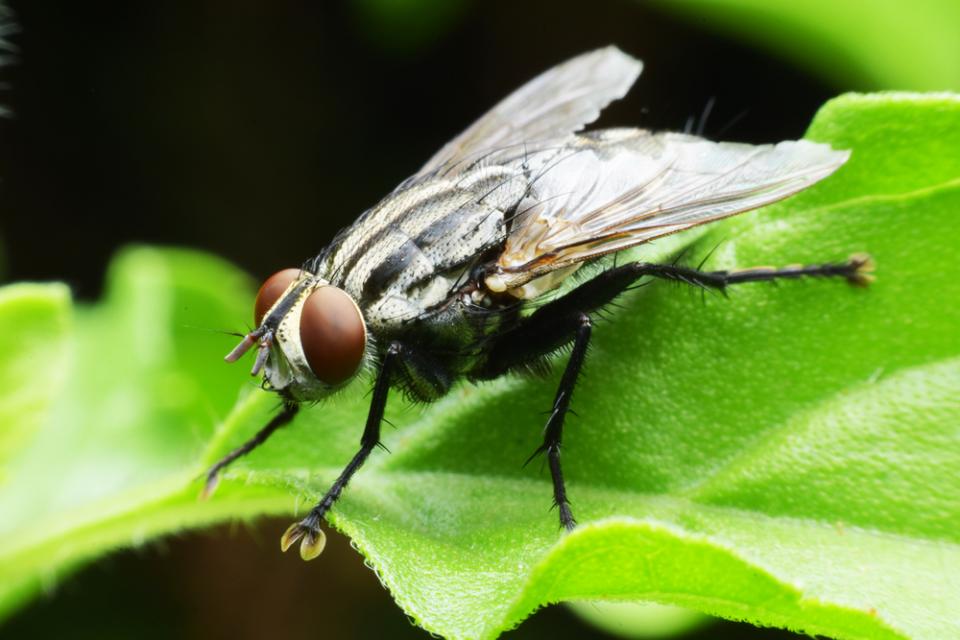If you’ve been growing cannabis for some time, by now you will how damaging some pests can be. Such is the case of black flies, a class of insects that, while not directly attacking plants, can lead to much more serious problems in very little time. Here is how to prevent, recognize and eliminate these annoying insects from your cannabis plants.

What are black flies?
Also called buffalo gnats and turkey gnats, black flies are blackish-grey insects (body and wings) with long, thin legs that belong to the diptera nematocera family. Adult black flies grow up to 4-5 mm in length, while larvae only to 2-4 mm. In the larval stage, black flies are translucent with a black head.
Life cycle of black flies
During reproduction, females lay about 200 eggs, which hatch in three days releasing the larvae. These live and feed in the soil during their first three months of life, where they build a cocoon in which they metamorphose. Once they have developed wings, adult black flies live in the area between the substrate surface and the lower branches of plants, feeding on decaying organic matter and fungi.

How to recognize black flies
Black flies are typically found in humid areas – i.e. on the substrate and on the lower parts of plants, flying up to the first branches. During the larval stage, black flies colonize the substrate, where they feed on secondary roots and eventually also on main roots.
The most immediate impact is plants exhibiting loss of vigor, which in turn leads to slowed metabolism. These symptoms can be aggravated by the wounds caused by the larvae to the roots, as these represent an easy entry point for harmful fungi like Fusarium and Pythium.
While black flies are not much of a threat to full grown plants, they can seriously damage younger specimens. In the early stage of colonization, you will see them flying along the substrate and around lower branches, while in more advanced stages, which are characterized by leaf yellowing and plant withering, you may find black flies trapped in the flowers of your plants – which may also be affected by fungal growth mainly at root level.
How to prevent black flies
Taking preventative measures is always easier than having to deal with tricky problems that can have serious implications in the long run, affecting your flowers both in terms of quantity and quality.
Now that's clear that prevention is always better than cure, here are some measures that will help you keep black flies at bay:
- Refrain from overwatering to avoid excess humidity in the substrate and around lower branches.
- Try to control relative humidity.
- Cover the substrate with 1 cm of diatomaceous earth to stop black flies from settling and reproducing on the soil.
- You can get the same effect by spraying the substrate surface with an emulsion of neem oil.

How to eliminate black flies
If your plants have been seriously infested, you can follow these suggestions:
- Cover the substrate with 1 cm of diatomaceous earth – if you haven't already done so – to limit the reproductive potential of the population almost straightaway. By doing so, the black flies won't be able to feed properly and will stop multiplying. Even if they manage to lay eggs, these won't reach the substrate or will remain trapped between the substrate and the diatomaceous earth layer.
- Introduce biological predators like Hypoaspis (Geolaelaps) and Steinernema feltiae.
- Covering the substrate with 2 mm of neem flour will produce the same effect as the diatomaceous earth: White flies will fail to feed properly and won't be able to reproduce.
- Use products containing Bacillus thuringiensis (Bt) or Bacillus thuringiensis israelensis (Bti), a class of beneficial bacteria that help restore the biological balance of soil media and that are particularly effective in controlling black flies in their larval stage. Don't worry if you've never heard of these terms before – if you're planning to use beneficial bacteria, you'll be spoilt for choice.





Thanks for the info